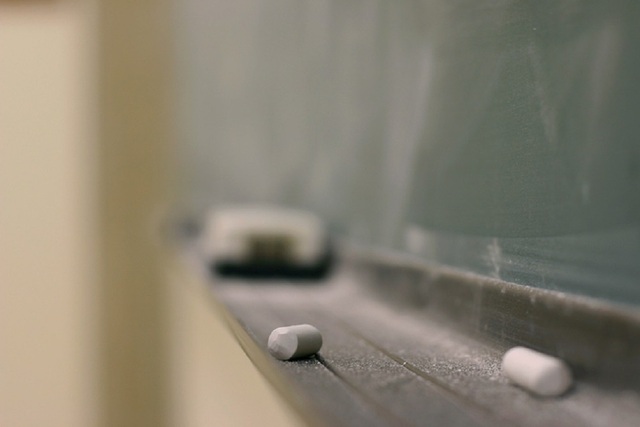 |
|
Chalk and blackboards will become a thing of the past in the new “classrooms of the future”
|
The funds will go toward remodeling schools and building “smart classrooms”
Seoul Metropolitan Office of Education (SMOE) Superintendent Cho Hee-yeon and Seoul Mayor Park Won-soon established plans to invest 1.0889 trillion won (US$1.02 billion) over four years to improve the education environment in the city’s kindergartens and elementary, middle, and high schools. Part of this includes the comprehensive remodeling of schools and the building of “smart classrooms” using smart devices in place of the uniform rows of desks in the past. On Apr. 16, the SMOE announced its “second SMOE/Seoul City basic plan for education cooperation efforts” at its new complex in Seoul. The second plan is to focus chiefly on classrooms, which are to be developed into more creative and comfortable spaces as the chief settings for student activities. The basic plan included four major tasks and 36 cooperative efforts. Forty schools are to be selected for support of 1.4 billion won (US$1.3 million) to prepare for a future society of more active “smart education.” “Smart classrooms” with increased wireless network availability and support for smart pad devices are to be created to prepare for an era where software instruction will become essential. A comprehensive remodeling effort is also planned, with architects and school participants taking part in design and planning to create distinctive classrooms. One possibility is a so-called “hanok classroom,” applying Korea’s traditional architecture style for schools in hanok villages. Eleven billion won (US$10.3 million) is to be spent on 128 selected schools over four years for a color design effort involving “applying beautiful colors” to express schools’ individuality. Old desks and chairs are to be replaced at 132 schools, with improvements to ceilings, floors, and doors. The SMOE plans to spend 743.6 billion won (US$695.3 million) and the city of Seoul 345.3 billion won (US$322.9 million) over the four-year period. Expansions are also planned for projects from the first education cooperation effort. All old restrooms are to be replaced at 668 schools as part of an improvement effort aimed at eliminating restrooms in use for 15 years or more. In the four years since 2014, the SMOE has improved restrooms at 800 elementary, middle, and high schools through the project. Another key effort in the latest four-year plan involves creating safe, non-discriminating school environments. The percentage of earthquake-resistant school buildings is to be increased from 31.3% to 54.1% over the next four years, and a stable procurement system free from genetically modified organisms (GMOs) is to be established through 2021 to supply safe ingredients for school meals. Instruction facilities are also to be built to allow the use of the Han River for “survival swimming” classes for elementary school students, which are to become mandatory in 2020. Expansions are also planned for labor and human rights education and gender equality education efforts. “With the school-age population in continuous decline due to the low birth rate and aging trend, the city of Seoul – which has over 1.03 million students attending 2,228 kindergartens and elementary, middle, and high schools – needs to transform from teacher-centered, lecture-style classes to student-centered, individualization-oriented classes,” a senior official at the SMOE said. “New school and classroom environments are needed to achieve this,” the official added. By Kim Mi-hyang, staff reporter Please direct questions or comments to [english@hani.co.kr]






